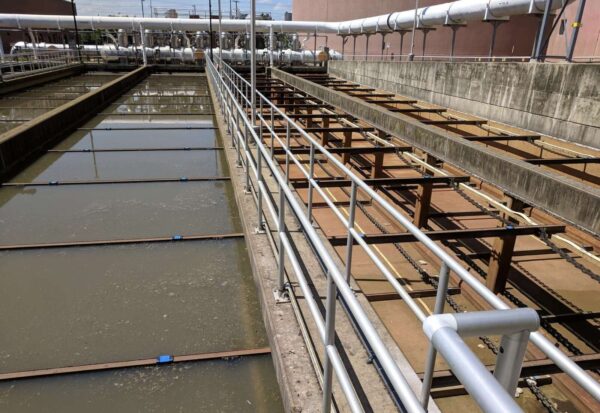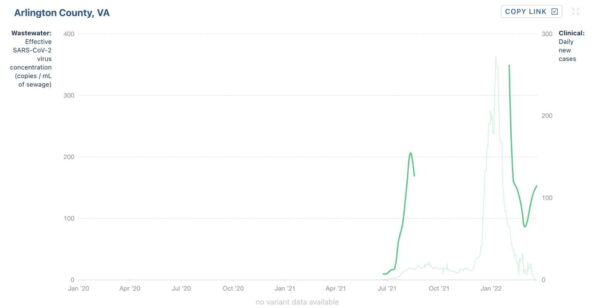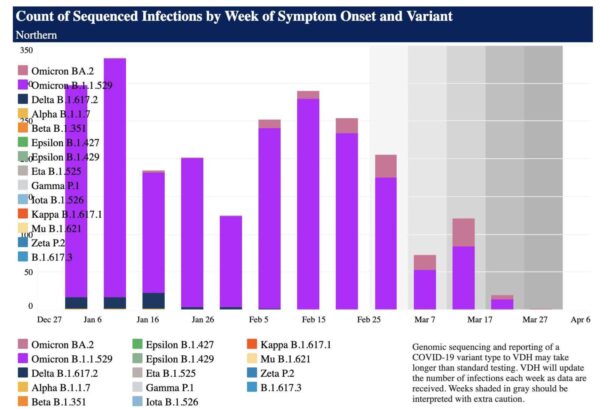
For the last two months, Arlington County has been getting your sewage tested to measure community Covid infection levels.
The Department of Environmental Services is sending weekly samples to Biobot, a Massachusetts-based health tech startup that got its start monitoring wastewater for opioids but pivoted to COVID-19 testing during the pandemic. The company now tests wastewater samples for municipalities nationwide.
Wastewater surveillance is seeing more interest as reported Covid testing rates wane and the focus of the federal government and some cities shifts from counting Covid cases to tracking hospitalization rates. Indeed, wastewater surveillance is one way the Centers for Disease Control is tracking the rise of the new Omicron subvariant BA.2, now the dominant Covid strain in the nation.
“The case counts aren’t as reliable as they used to be, so we’ve seen more interest in wastewater analysis as an unbiased look at what’s going on in their communities,” Biobot’s Jennings Heussner tells ARLnow. “People aren’t getting tested because they’re being tested at home, they don’t know they’re sick, or they don’t feel the need to get a test — they feel poorly and decide to stay home.”
Even if people stop seeking out tests, there is one place where their viral load will show up: the toilet.
“You start shedding the virus in your fecal matter at the point of infection,” Heussner said. “That increases until you become symptomatic and then begins to fall off from there. You have a window of — it varies from person to person — up to a week before you know you’ve been sick that you’ve been shedding the virus in your fecal matter.”
Biobot uses PCR testing to ascertain the concentration of viral RNA per milliliter of sewage, which is the unit it reports on its webpage. Regular wastewater samples can give municipalities anywhere from a two to 10 days’ heads-up of what might be coming in terms of community infection levels, before the infections show up in testing data, Heussner said.

According to the Virginia Dept. of Health, the average rate of new cases in Arlington hit a seasonal low point on March 6. Biobot’s wastewater data, meanwhile, hit its low point two days earlier, on March 4.
The local case rate has since nearly doubled, rising from 24 daily cases on March 6 to a seven-day moving average of 46 daily cases today, according to VDH data. Biobot’s wastewater data, meanwhile, continues to point to an upward trajectory of infections in Arlington.
Most cases in Northern Virginia stem from the dominant Omicron variant, with subvariant BA.2 comprising a growing portion of total case numbers, according to a new state dashboard tracking variants of Covid. Biobot can detect which variants are present, although that information is currently not available for Arlington.

As for the gap in wastewater sampling data on the chart above, Heussner said Biobot received samples from Arlington County last summer through a collaboration with the U.S. Department of Health and Human Services. Sampling stopped when that partnership ended, until Arlington again began sending samples in February.
While the county is submitting wastewater to weekly testing, it is not rushing to adopt this method as a gold standard for tracking the virus.
“The Arlington County Public Health Division reminds everyone that wastewater surveillance for the virus that causes COVID-19 is a developing field,” public health spokesman Ryan Hudson said. “Wastewater testing over time may provide trend data that can complement other surveillance data to inform decision-making about the response to COVID-19.”
He noted that currently, wastewater testing cannot “reliably and accurately predict” the number of infected individuals in a community.
“As for the uptick in cases, now is the time to get your COVID-19 booster if you haven’t,” Hudson said. “It is recommended that everyone 12 years and older receive the appropriate booster doses of the COVID-19 vaccine.”

